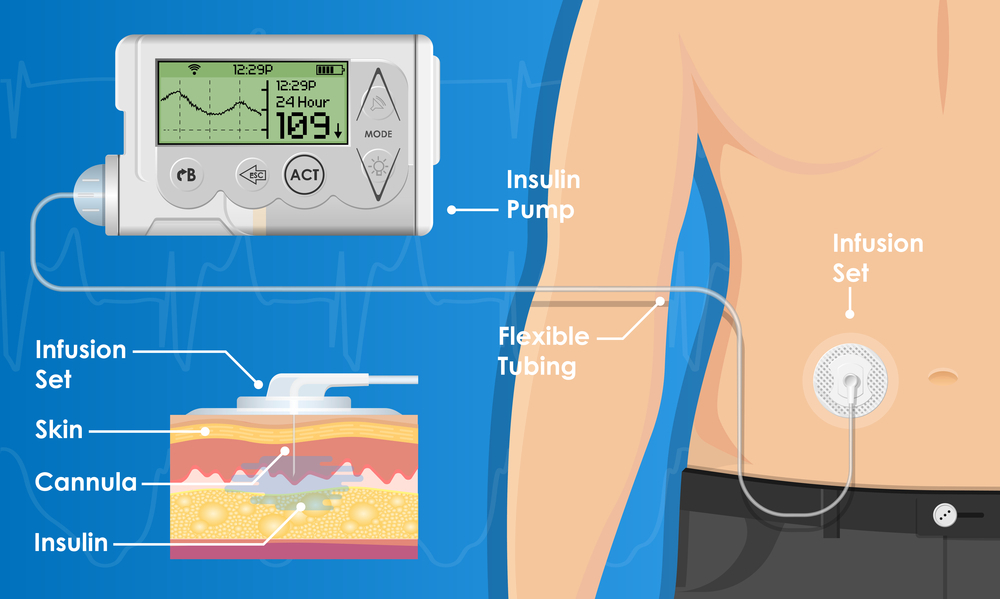Insulin Pump Therapy / Diabetes Pump Therapy

Diabetes therapy with insulin
Insulin plays a key role in metabolism: This hormone alone enables sufficient glucose (sugar) to be transported from the blood to the body's cells, where it is converted into energy.
In the case of people with type 1 diabetes the pancreas no longer produces insulin. It must be supplied by means of insulin therapy. Insulin therapy may also be necessary in the case of type 2 diabetes, if prescribed by a healthcare professional.
Basics of the therapy
In order to ensure that your treatment involving insulin therapy is effective, it is important to understand the following:
- Your body requires insulin continuously (around the clock) in order to maintain all bodily functions.
- Additional insulin is required at mealtimes – depending on the amount of carbohydrates you consume.
Insulin therapy for people with type 1 diabetes
The two most common forms of insulin therapy for people with type 1 diabetes are:
-
Multiple Daily Injections (MDI) with insulin pens Injections of long-acting insulin once or twice daily and short-acting insulin (injections) in the fatty tissue around mealtimes, as needed.
- Insulin pump therapy (CSII – Continuous Subcutaneous Insulin Infusion) With this therapy an insulin pump supplies the body continuously (around the clock) with its basic insulin requirements. The additional insulin required at mealtimes is administered by pressing a button. The insulin is administered from the insulin pump via a cannula into the fatty tissue.
Blood glucose levels are personally measured several times each day with a blood glucose meter. These values form the basis for calculating mealtime insulin and any correction insulin.
Insulin therapy for people with type 2 diabetes
For people with type 2 diabetes one of the following therapies is often selected as a way to start the patient on insulin therapy, whereby the insulin is injected into the fatty tissue with an insulin pen:
- Basal-supported oral therapy with a long-acting insulin and tablets.
- Supplementary insulin therapy with a short-acting insulin and tablets.
- Conventional therapy with a mixture of short- and fast-acting insulin.